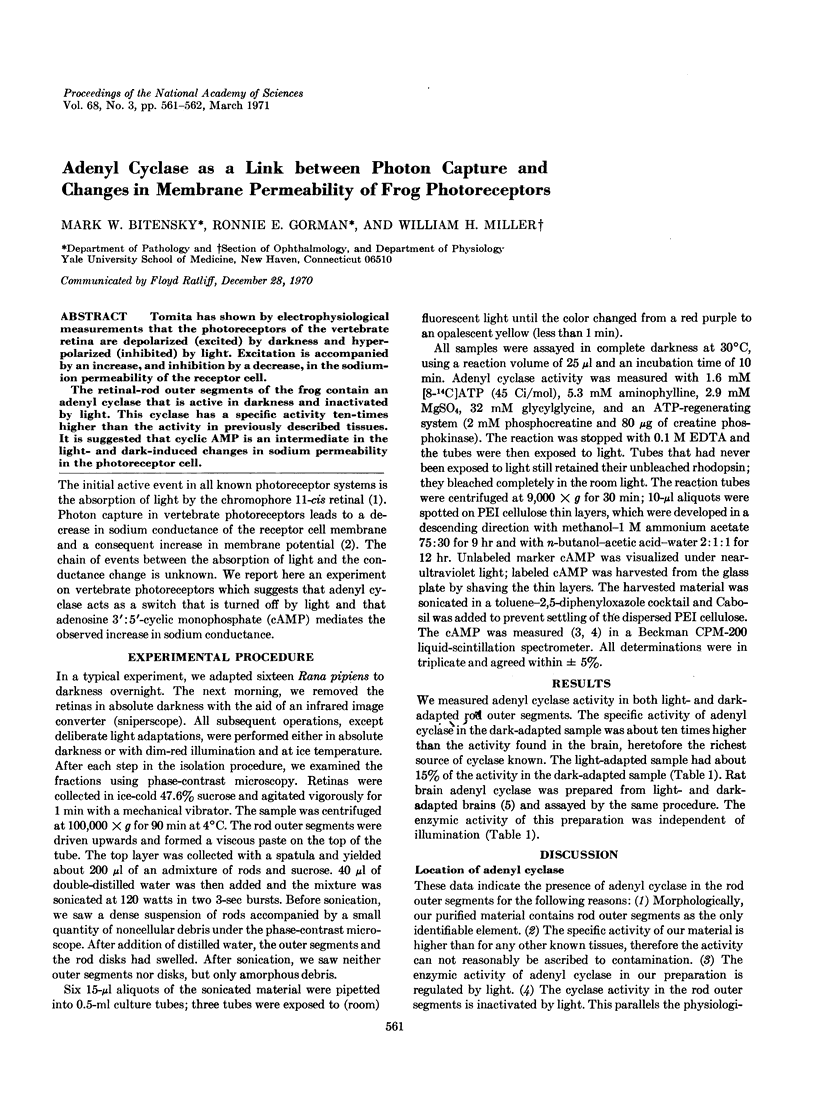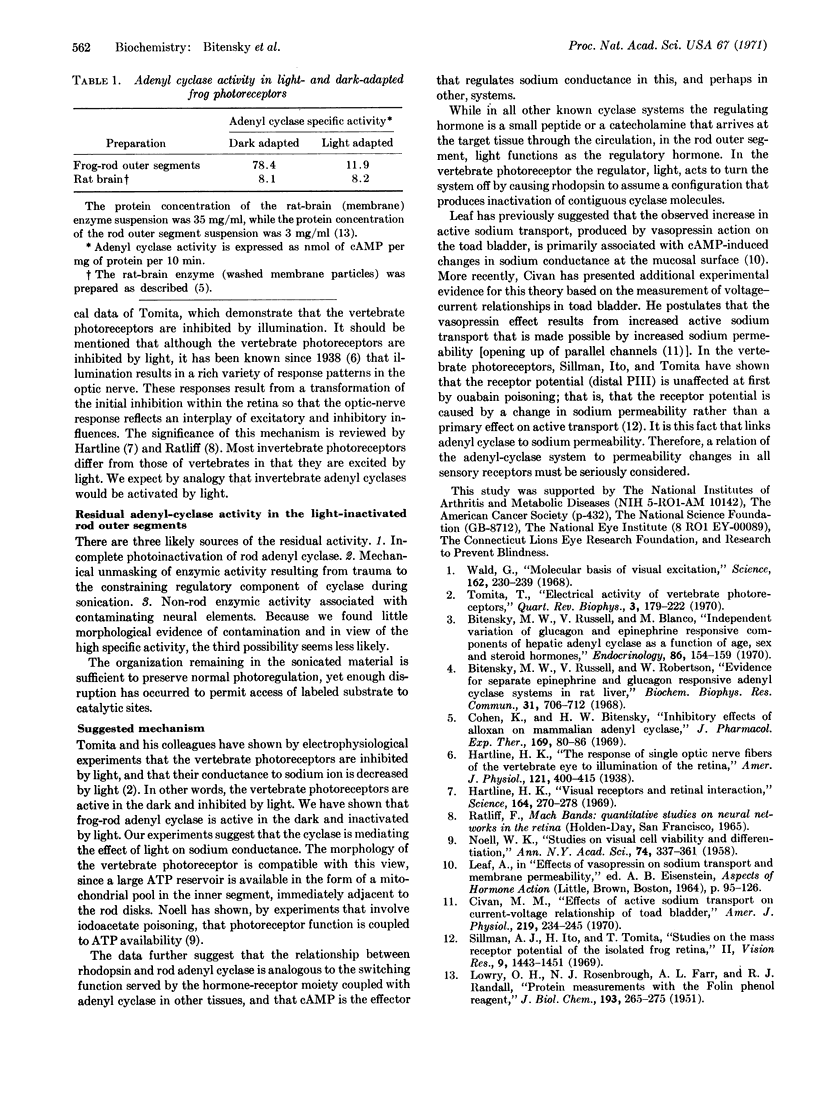Abstract
Tomita has shown by electrophysiological measurements that the photoreceptors of the vertebrate retina are depolarized (excited) by darkness and hyperpolarized (inhibited) by light. Excitation is accompanied by an increase, and inhibition by a decrease, in the sodiumion permeability of the receptor cell.
The retinal-rod outer segments of the frog contain an adenyl cyclase that is active in darkness and inactivated by light. This cyclase has a specific activity ten-times higher than the activity in previously described tissues. It is suggested that cyclic AMP is an intermediate in the light- and dark-induced changes in sodium permeability in the photoreceptor cell.
Full text
PDF

Selected References
These references are in PubMed. This may not be the complete list of references from this article.
- Bitensky M. W., Russell V., Blanco M. Independent variation of glucagon and epinephrine responsive components of hepatic adenyl cyclase as a function of age, sex and steroid hormones. Endocrinology. 1970 Jan;86(1):154–159. doi: 10.1210/endo-86-1-154. [DOI] [PubMed] [Google Scholar]
- Bitensky M. W., Russell V., Robertson W. Evidence for separate epinephrine and glucagon responsive adenyl cyclase systems in rat liver. Biochem Biophys Res Commun. 1968 Jun 10;31(5):706–712. doi: 10.1016/0006-291x(68)90619-0. [DOI] [PubMed] [Google Scholar]
- Civan M. M. Effects of active sodium transport on current-voltage relationship of toad bladder. Am J Physiol. 1970 Jul;219(1):234–245. doi: 10.1152/ajplegacy.1970.219.1.234. [DOI] [PubMed] [Google Scholar]
- Cohen K. L., Bitensky M. W. Inhibitory effects of alloxan on mammalian adenyl cyclase. J Pharmacol Exp Ther. 1969 Sep;169(1):80–86. [PubMed] [Google Scholar]
- Hartline H. K. Visual receptors and retinal interaction. Science. 1969 Apr 18;164(3877):270–278. doi: 10.1126/science.164.3877.270. [DOI] [PubMed] [Google Scholar]
- LOWRY O. H., ROSEBROUGH N. J., FARR A. L., RANDALL R. J. Protein measurement with the Folin phenol reagent. J Biol Chem. 1951 Nov;193(1):265–275. [PubMed] [Google Scholar]
- NOELL W. K. Studies on visual cell viability and differentiation. Ann N Y Acad Sci. 1959 Nov 12;74(2):337–361. doi: 10.1111/j.1749-6632.1958.tb39556.x. [DOI] [PubMed] [Google Scholar]
- Sillman A. J., Ito H., Tomita T. Studies on the mass receptor potential of the isolated frog retina. II. On the basis of the ionic mechanism. Vision Res. 1969 Dec;9(12):1443–1451. doi: 10.1016/0042-6989(69)90060-1. [DOI] [PubMed] [Google Scholar]
- Tomita T. Electrical activity of vertebrate photoreceptors. Q Rev Biophys. 1970 May;3(2):179–222. doi: 10.1017/s0033583500004571. [DOI] [PubMed] [Google Scholar]
- Wald G. Molecular basis of visual excitation. Science. 1968 Oct 11;162(3850):230–239. doi: 10.1126/science.162.3850.230. [DOI] [PubMed] [Google Scholar]


